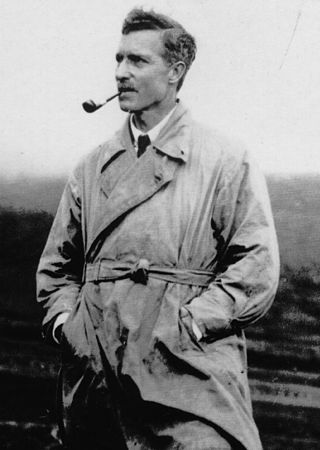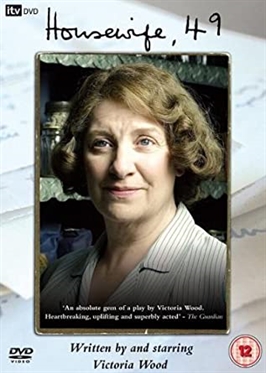
George Douglas Howard Cole was an English political theorist, economist, historian, and novelist. As a believer in common ownership of the means of production, he theorised guild socialism. He belonged to the Fabian Society and was an advocate for the co-operative movement.

Colonel Richard Meinertzhagen, CBE, DSO was a British soldier, intelligence officer, and ornithologist. He had a decorated military career spanning Africa and the Middle East. He was credited with creating and executing the Haversack Ruse in October 1917, during the Sinai and Palestine Campaign of the First World War, but his participation in this matter has since been refuted.

Frank Humphrey Sinkler Jennings was an English documentary filmmaker and one of the founders of the Mass Observation organisation. Jennings was described by film critic and director Lindsay Anderson in 1954 as "the only real poet that British cinema has yet produced".
Charles Henry Madge was an English poet, journalist and sociologist, now most remembered as a founder of Mass-Observation.

Street photography is photography conducted for art or inquiry that features unmediated chance encounters and random incidents within public places. It usually has the aim of capturing images at a decisive or poignant moment by careful framing and timing. Street photography overlaps widely with candid photography, although the latter can also be used in other settings, such as portrait photography and event photography.
Major Tom Harnett Harrisson, DSO, OBE was a British polymath. In the course of his life he was an ornithologist, explorer, journalist, broadcaster, soldier, guerrilla, ethnologist, museum curator, archaeologist, documentarian, film-maker, conservationist and writer. Although often described as an anthropologist, and sometimes referred to as the "Barefoot Anthropologist", his degree studies at University of Cambridge, before he left to live in Oxford, were in natural sciences. He was a founder of the social observation organisation Mass-Observation. He conducted ornithological and anthropological research in Sarawak (1932) and the New Hebrides (1933–35), spent much of his life in Borneo and finished up in the US, the UK and France, before dying in a road accident in Thailand.
"The Lambeth Walk" is a song from the 1937 musical Me and My Girl. The song takes its name from a local street, Lambeth Walk, once notable for its street market and working-class culture in Lambeth, an area of London. The tune gave its name to a Cockney dance made popular in 1937 by Lupino Lane.

Nella Last was an English housewife who lived in Barrow-in-Furness, Lancashire, England. She wrote a diary for the Mass Observation Archive from 1939 until 1966 making it one of the most substantial diaries held by Mass Observation. Her diary, consisting of around 12 million words, two million of which were written during World War II, is one of the longest in the English language.

Housewife, 49 is a 2006 television film based on the wartime diaries of Nella Last. Written by and starring English actress and comedian Victoria Wood, it follows the experiences of an ordinary housewife and mother in the northern English town of Barrow-in-Furness, Lancashire, during the Second World War. It was first broadcast in the UK by ITV on 10 December 2006.

Simon Frank Garfield is a British journalist and non-fiction author. He has written for publications such as Time Out, The Independent, and The Observer. His early work focused on the music industry, but his books have increasingly delved into niche topics, from British wrestling and the invention of mauve to the history of encyclopedias and typefaces. Garfield is based in London.
Mark Abrams was a British social scientist and market research expert who pioneered new techniques in statistical surveying and opinion polling.
Profile Books is a British independent book publishing firm founded in 1996. It publishes non-fiction subjects including history, biography, memoir, politics, current affairs, travel and popular science.

The Storran Gallery was a fashionable avant-garde art gallery in London in the 1930s. In 1937 it was run by the prominent art critic Eardley Knollys with Ala Story and the artist Frank Coombs (1906-1941). The gallery was at 106 Brompton Road London SW3 but moved to Fitzroy Street and then 316 Euston Road.
Few Eggs and No Oranges, the diary of Vere Hodgson, recounts British life on the home front during the Second World War. It was first published in 1976 by Dennis Dobson and again in 1999 by Persephone Books. Described by the author as "a diary showing how unimportant people in London and Birmingham lived through the war years", the published diaries begin on 25 June 1940, the morning after the first air raid on London.

One Day in History was a single-day initiative by several UK heritage organisations that aimed to provide a historical record of the everyday life of the British public in the early 21st century. Described as the "world's biggest blog", it encouraged UK citizens to write diary entries of 100–650 words of what they had done on 17 October 2006, and then upload them to the official website of the initiative. The project formed a part of History Matters: Pass It On, a history campaign led by several UK heritage organisations. Submissions were received until 1 November, and 46,000 entries were uploaded in this time, many of which were from students and celebrities. After being available to view on the History Matters website, the archive of the diary entries was moved to the UK Web Archive at the British Library and the library of the University of Sussex. The campaign received mixed reviews, with Institute of Historical Research's David Cannadine and The Guardian's Dave Hill speaking positively of it, whereas journalist John Plunkett termed it to be a "historical record of people with computers".

John Sommerfield was a British writer and left-wing activist known for his influential novel May Day, which fictionalised a Communist upheaval in 1930s London. Sommerfield volunteered to fight in the Spanish Civil War and wrote one of the first combatant accounts of that conflict. He later served in the Royal Air Force in World War II.
Dennis Chapman (1911–2003) was a social psychologist best known for his book The Home and Social Status, published in 1955, which investigated the British working class domesticity in the mid-twentieth century. His research focuses mainly on two primary aspects of society: domestic housing and provision, and the sociology of crime.
Jean Lucey Pratt was an English writer and bookseller. She published little during her lifetime and is best known as a diarist. Her anonymous Mass-Observation diaries written in the 1940s were featured in three popular books edited by Simon Garfield. A Notable Woman: The Romantic Journals of Jean Lucey Pratt, published in 2015, is derived from private diaries she kept between 1925 and 1986.
Professor Dorothy Sheridan MBE, FRSA is a British archivist and historian, who was the Director of the Mass Observation Archive (MOA) from 1990 to 2008. She is a Trustee of the MOA and an Honorary Professor of History at the University of Sussex.
Savage Civilisation by Tom Harrisson was published in January 1937 by Victor Gollancz. The book is a mixture of history, ethnographical account and travel narrative, set in the New Hebrides. Harrisson’s biographer, Judith Heimann, describes it as one of the “few works of scholarship in the social sciences to have survived so well the sixty-odd years” since its publication.











